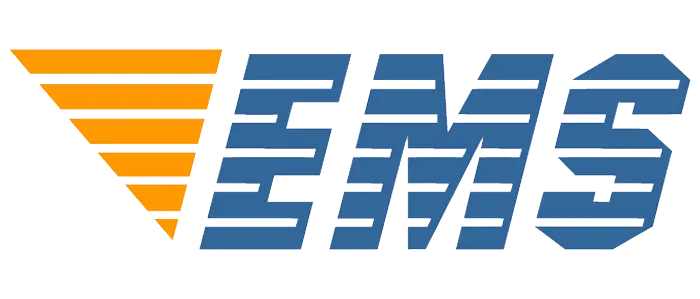LINING-Effect: modern tissue bio-reinforcement with the help of a cannula

A universal procedure that allows solving several aesthetic problems in different areas at once – a godsend for any cosmetologist. We present you an atraumatic technique of tissue reinforcement using a blunt-ended cannula with contouring fillers, which allows you to work both in the complex area of the upper third of the face and in the delicate décolleté zone.
Н. P. Mikhailova,
M.D., dermatovenerologist, cosmetologist, associate professor of the Department of Skin Diseases and Cosmetology, N.I. Pirogov Russian National Research Institute of Medical Sciences, scientific director of the Natalia Mikhailova International Academy of Aesthetic Medicine, Moscow.
Lining-effect (from English – straightening, leveling) – smoothing of the covering tissues and replenishment of the missing volume due to soft uniform distribution of the injected gel in the tissues. Subsequent replacement of the gel with connective tissue provides mechanical strengthening of the dermis and hypodermis, reducing their displacement relative to each other and allows you to fix the result for 6 – 12 months. (This mechanism of strengthening connective tissue fibers is described in detail in the article “Modern view of reinforcement in cosmetology. Is the cannula method an effective alternative?”).
Thus, with subcutaneous injection of the drug using a cannula achieves a long-lasting lifting effect, increasing the elasticity of soft tissues in the tired morphotype of aging, smoothing wrinkles and smoothing the relief in the finely wrinkled type of aging. There is a uniform filling of atrophied fatty compartments, which significantly rejuvenates patients “here and now”. This procedure is especially relevant in such delicate areas as the forehead, cheeks and décolleté. The result is visible immediately after the procedure and gradually improves over a period of 13 to 20 days.
To make the procedure as comfortable as possible, cannulas are used.
The Japanese company TSK Laboratory (the name comes from the Japanese tasuku, which means “to help”) is a world leader in the production of needles for biopsy, puncture, ophthalmology and dentistry. They are made of high quality medical steel, have an individual protective case and a separate perforation needle with a slightly larger diameter to make cannula insertion as easy as possible. A unique feature of the volume fillers is the outlet opening as close as possible to the tip of the cannula, which allows for more precise implantation of the filler, in addition, it avoids unwanted loss of the preparation. This advantage becomes especially noticeable if we compare them under magnification with cannulas of other manufacturers, as well as TSK cannulas of the previous generation (Fig. 1).

A special advantage of the LINING-Effect procedure based on volume fillers is the ability to work in different areas, from the complex upper third of the face to the delicate areas of the décolleté and hands. The versatility of the procedure allows you to solve many aesthetic problems.
Fillers for volume – monophasic, highly plastic, homogeneous sterile apyrogenic gels, which contain biosynthetic modified A. P. R. I. technology. P. R. R. I. hyaluronic acid with a concentration of 23 mg/mL.
The A. P. R. I. process of modifying the spatial structure of molecules occurs through the formation of effective bilateral bonds of 1,4-butanediol-diglycidyl ether (BDDE) molecules with various macromolecular chains of hyaluronic acid in a highly concentrated aqueous medium, resulting in 100% effective uniform cross-linking of the molecules with no residual free BDDE. The process is carried out without additional chemical reagents such as acids or bases, which guarantees absolute safety.
LBA OVERVIEW.
Undoubtedly, botulinum therapy is the leader in the fight against forehead wrinkles, but there are situations when we need an alternative method of correction:
– for the purposes of additional correction of horizontal forehead wrinkles, if the nature of the creases has changed from dynamic to static;
– if the patient is insensitive to botulinum therapy;
– if the risk of side effects (weighting of the eyebrows, swelling of the upper eyelids) exceeds the positive effect of botulinum therapy.
In this case, reinforcement in the subcutaneous fatty tissue in the forehead area using a cannula reduces the activity of mimic muscles, which is an additional plus.
Procedure: LINING-Effect in the forehead area.
Indications: transverse dynamic and static wrinkles, lack of expression of the brow ridges.
Objective: correction of existing wrinkles and prevention of new wrinkles, creation of a more youthful profile.
At the beginning of the procedure, two symmetrical access points from the frontal tubercles, located 1 – 1.5 cm below the hair growth line, are defined (Fig. 3).

From each access point, a cannula was used to inject the drug evenly over the entire area, 5 – 8 vectors on each side (Fig. 4). When lifting the cannula should contour, but not translucent, 0.05 – 0.15 ml of the drug was used for each vector, the total amount of fillers for the volume for the whole procedure was 1 ml.


The result two weeks after the LINING-Effect procedure is shown in Fig. 5. Note the marked reduction in the depth of horizontal forehead wrinkles. In addition, the patient notes a decrease in the activity of the frontalis muscle without botulinum therapy for six months before and after the procedure. The duration of the effect is six to ten months.




FIG. 5. LINING-Effect in the forehead area. A, C – before the procedure. B, D – result two weeks after the LINING-Effect procedure
MIDDLE AND LOWER THIRD OF THE FACE

The middle and lower thirds of the face are well suited for cannula-assisted reinforcement. The presence of a large number of creases, nasolabial folds, lip chin folds, volume loss in fatty compartments are aesthetic problems for which the LINING-Effect procedure is ideally suited.
Procedure: LINING-Effect in the middle and lower thirds of the face.
Indications: nasolabial and lip-chin folds, “smile lines”, tired look, signs of gravitational ptosis – “puckers”, etc.
Purpose: strengthening of the ligamentous apparatus, prevention of gravitational ptosis, formation of wrinkles and folds, reducing the severity of signs of aging.
The access point is formed 1.5 cm below the bony edge of the orbit (along the zygomatic arch) outside the projection of large vascular and nerve trunks, so that the length of the cannula was sufficient to work through large folds and wrinkles (Fig. 6). 0.2 ml is used for the central vectors (wider lines), and 0.1 ml for the other vectors.
The level of injection is similar to the forehead area; this is the way to achieve stimulation of fibroblasts of the reticular layer of the dermis and superficial connective-tissue junctions. At the same time, the density of the drug and its ability to distribute evenly in the tissues minimizes the risk of hypercorrection.
Fig. 7 shows the result of LINING-Effect procedure after two weeks. The expression of nasolabial and lip-chin folds is significantly reduced, the corners of the mouth are raised, the number and severity of dermal mimic creases are reduced.
Subjectively, the patient notes the lifting effect, reduction in the severity of “puckers” and sagging tissues.


DÉCOLLETAGE AREA
The décolleté area is considered a delicate zone that requires a special approach. Most often cosmetologists use here a method of intradermal therapy, for example, preparations APRILINE AgeLine and SkinLine, depending on the indications, chemical peels and apparatus techniques. But to get a pronounced result requires a course of procedures, which takes a long time, and patients want to get a quick effect with a minimum number of traces of manipulation (papules, bumps, peeling, redness). In this case the LINING-Effect procedure with APRILINE® fillers is the ideal option for fast and effective firming of the décolleté area and correction of existing wrinkles.
Procedure: LINING-Effect in the décolleté area.
Indications: reduced skin tone and turgor, chrono- and photo-aging in the décolleté area.
Objective: to stimulate collagen synthesis, to strengthen the skin flap, to reduce the severity of chrono- and photo-aging in the décolleté area with minimal trauma and without rehabilitation period.
Access points are chosen for uniform filling of the whole therapeutic zone (Fig. 8). The drug consumption per vector is 0.1 – 0.2 ml, total per procedure.

After two weeks, significant skin firming, improvement of skin turgor and tone, reduction of dermal wrinkles and creases expression, general improvement of décolleté appearance are noted (Fig. 9).


POST-PROCEDURE CARE
All patients after the LINING-Effect procedure were treated with antiseptic skin treatment, and a regenerating cream with peptides was applied, which promotes skin recovery after the procedure and can be recommended for post-procedural care. In case of single ecchymoses at the cannula access points, the patient can be advised to use a cream at home.
After the procedure, we recommend that the patient
– Do not touch the face with hands for 15 – 30 minutes;
– Do not apply cosmetics for 3 – 4 hours;
– exclude warming up procedures, visiting the swimming pool for two weeks.
CONCLUSION
The introduction of fillers for contouring in the LINING-Effect technique has a physiological stimulating effect on fibroblasts, strengthening the dermis and improving skin tone and turgor. Due to uniform filling there is a reduction in the severity of existing folds and wrinkles immediately after the procedure, the effect becomes more pronounced during two weeks. Due to long-term biodegradation of the drug creates a new own framework for the skin, preventing the formation of new wrinkles and folds. The procedure is absolutely comfortable, leaves no post-procedural traces and does not require time for rehabilitation.





